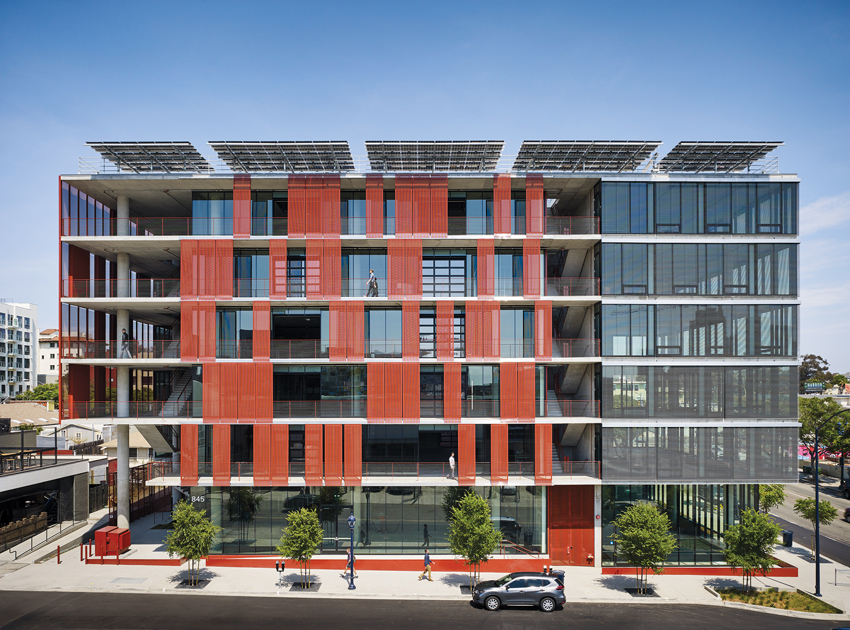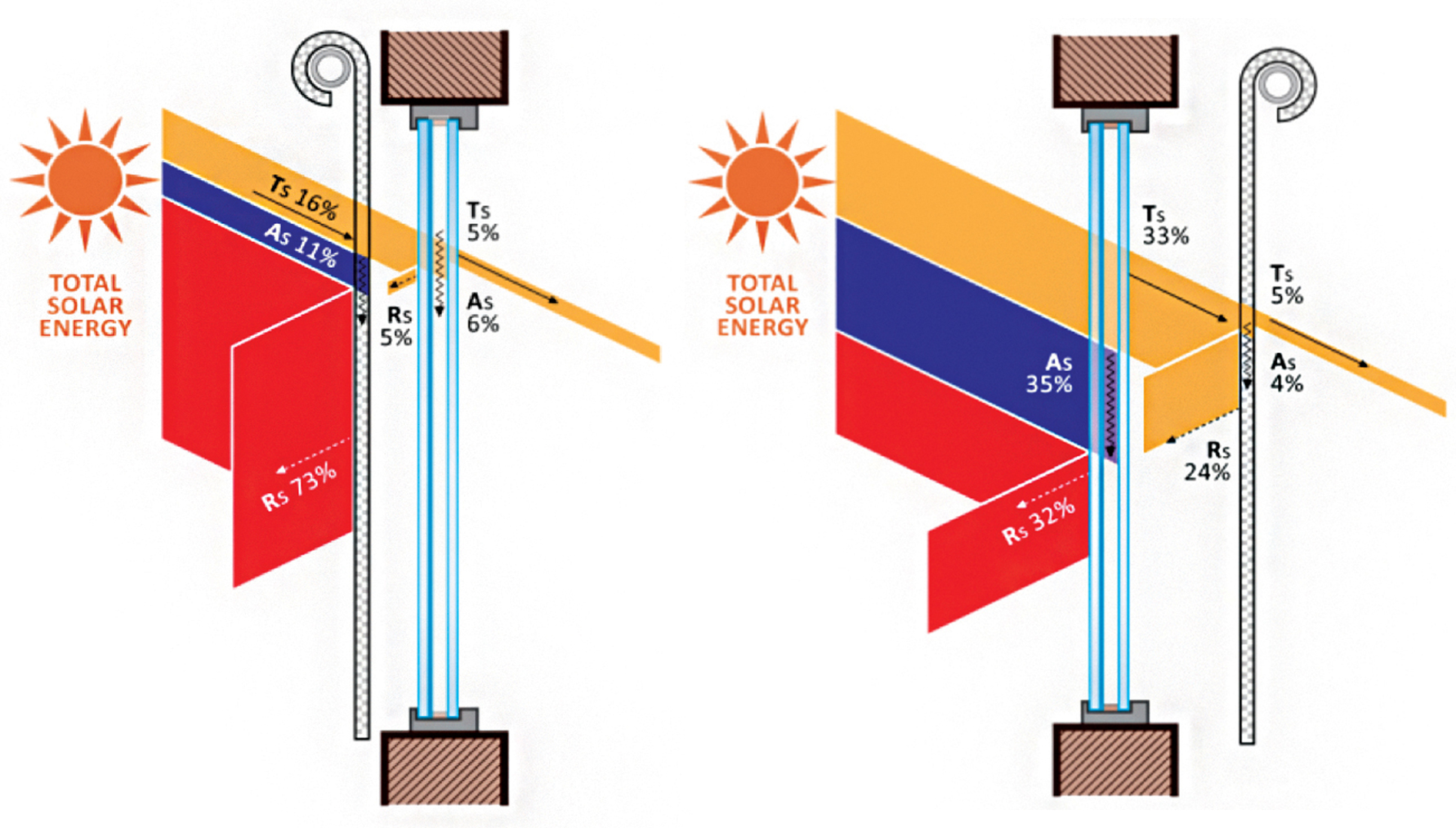Mitigating Glare and Solar Heat Gain with Exterior Shading Systems
Learning Objectives:
- Review key research establishing the health and wellness, occupant comfort and productivity, and energy savings benefits of daylighting.
- Explain how solar heat gain occurs, and why exterior shading systems are an appropriate and effective way to manage it.
- Identify the main variables that must be evaluated to select the optimal exterior shading system for a project to improve the health and well-being of occupants.
- Describe the advantages, limitations, and applications of exterior fabric zip systems, venetian blinds, and rack arm systems.
- Discuss how to integrate control systems into exterior shading devices to maximize solar control and the impact on occupant health and wellness.
Credits:
This course is approved as a Structured Course
This course can be self-reported to the AANB, as per their CE Guidelines
Approved for structured learning
Approved for Core Learning
This course can be self-reported to the NLAA
Course may qualify for Learning Hours with NWTAA
Course eligible for OAA Learning Hours
This course is approved as a core course
This course can be self-reported for Learning Units to the Architectural Institute of British Columbia
Harnessing the sun’s free energy in the form of daylighting, the benefits of natural light are numerous indeed. But only carefully calibrated shading designs will optimally deliver the potential health and wellness benefits from natural daylighting as well as occupant comfort and productivity and energy savings.
With a goal of optimizing solar control and mitigating unwanted heat gain and glare, exterior shading systems are a proven and highly recommended strategy for optimizing performance.

Photo: Nick Merrick, Hall + Merrick
Exterior venetian blinds, like the ones on this LEED Platinum project in San Diego, are a classic shading option with lowering, raising, and tilting capabilities.
Daylighting Benefits
In a recent study, Cornell University researchers reported a high 84 percent decrease in eyestrain, headaches, and blurred vision symptoms that often result from prolonged computer and device use at work, which can detract from productivity.1 The study also found that workers sitting close to a window that optimized daylight exposure were 2 percent more productive, which equates to an additional $100,000 per year of value for every 100 workers.
Similarly, a 2018 poll of 1,614 North American employees by the human resources advisory firm Future Workplace discovered that access to natural light and outdoor views is the number-one most important attribute of the workplace environment.2 On the contrary, the absence of natural light and views actually hurts the employee experience, as more than a third of workers feel that they do not get enough natural light in their workspace, 47 percent acknowledge feeling tired in the absence of natural light or a window, and 43 percent report feeling gloomy without daylight.
As for cost savings, the National Institute of Building Sciences’s (NIBS’) Whole Building Design Guide (WBDG) states that a combination of reduced electric lighting and associated building cooling energy usage through the use of shading and daylighting strategies can reduce total energy costs by as much as one-third.3
Defining Terms
To better understand the variables involved in achieving good quality shading and daylighting design, some definitions are in order.
Solar control is the ability to manage the sun’s energy. To optimally benefit from the sun’s energy, a solar control system seeks to maximize the use of natural daylight in a building, while ensuring that problems do not occur as a result of excessive heat gain and glare.
Sunlight is made up of energy with a range of different wave lengths covering what is known as the solar spectrum. The solar spectrum is divided into three main sections—ultra violet, visible light, and infrared—and all have a short wavelength, with the latter carrying very little heat.
When sunlight reaches the earth and hits a surface, however, some of it is reflected back into the atmosphere, while the balance is absorbed into the ground, vegetation, water, and people, for example. The absorbed part of the solar energy is then emitted as long wave energy, and this is what produces heat.
The solar equation is as follows: Total solar energy = As + Rs + Ts = 100 percent, where As is absorption, Rs is reflection, and Ts is transmittance. To minimize heat gain inside of the building, the Rs component needs to be as high as possible, and the As and Ts components should be as low as possible.
The solar equation determines what happens to the solar energy when it reaches a glazing assembly and defines the solar heat gain coefficient (SHGC). The value of SHGC ranges from 0 to 1; the lower the SHGC, the more effective the system. With an exterior venetian blind, the SHGC can be 0.10 or lower, meaning that more than 90 percent of the solar energy is prevented from entering the building and generating heat gain.

Image courtesy of Mermet USA
To minimize solar heat gain inside of a building, the reflection (Rs) must be as high as possible, while the absorption (As) and transmittance (Ts) must be as low as possible (left). Upon adding a basket-weave 3 percent interior white shading system, the solar heat gain coefficient (SHGC) entering the glass into the interior drops down to 0.16 for a 58 percent reduction. If the shading is located on the exterior, the SHGC comes down further to 0.10 for a 74 percent decrease (right).
Interior versus Exterior Shading
To minimize unwanted heat gain and drive down the SHGC inside a space, as noted, shading systems can be very effective, particularly exterior shades.
Consider a double-glazed unit with a high light transmittance of 68 percent and a low-e coating on surface 2, which is the inner side of the outer piece of glazing. Without shading, the SHGC registers quite high at 0.38.
Now add a basket-weave 3 percent white shading system on the interior, and the SHGC drops down to 0.16 for a 58 percent reduction. By placing that same shading fabric on the exterior, the SHGC comes down further to 0.10, which is a 74 percent decrease compared to the glazing without shading.
In analyzing the transmittance in these three cases, 33 percent of the total solar energy passes through the glazing and enters the room when there is no shading. After adding internal or external fabric, this declines to just 5 percent.
In terms of absorption, however, there will actually be an increase when shading is added to the interior, as an additional 4 percent is absorbed into the fabric, bringing the As value from 35 percent to 39 percent. With an exterior shading system, however, the As value is cut in half to 17 percent.
In addition to controlling solar heat gain and providing thermal comfort, an effective shading system will also assist in achieving good daylighting, which, as shown by many studies, is essential for occupant productivity and job satisfaction, not to mention energy savings. To this end, NIBS’ WBDG states that electric lighting accounts for 35 percent to 50 percent of the total electrical energy consumption in commercial buildings.
Consequently, potential cost savings from effective daylighting strategies—which can be optimized by well-designed shading devices—is very significant.
Controlling Glare
An important aspect of solar control is controlling glare, particularly bright windows. Glare is the result of excessive contrasts of luminance in the field of view. The discomfort is associated more with interiors and refers to discomfort or distraction caused by bright windows or luminaires.
Studies have shown that glare and direct sunlight can make it difficult for employees to perform basic work functions.
Case in point, the Boca Raton, Florida-based market research firm Amplitude Research surveyed 400 employees at a Minnesota office and found that 49 percent were affected by sun glare at least periodically in their workplace.4 Of this group, 30 percent complained that the glare caused eye pain, 24 percent reported headaches, 23 percent stated that the glare was annoying, and another 23 percent said it created a distraction.
By using shading systems to modulate light at the window, the contrast between the window and the immediate surroundings where occupants are working can be reduced, thereby eliminating or significantly reducing the glare’s impact.
The use of operable shading systems, particularly in conjunction with automated controls, makes them very effective in managing daylight and glare. While an exterior shading system’s main function is managing heat gain entering into the building, it can be effective in managing daylight and glare, although in some cases, an interior shading system will also be needed to control the glare.
















